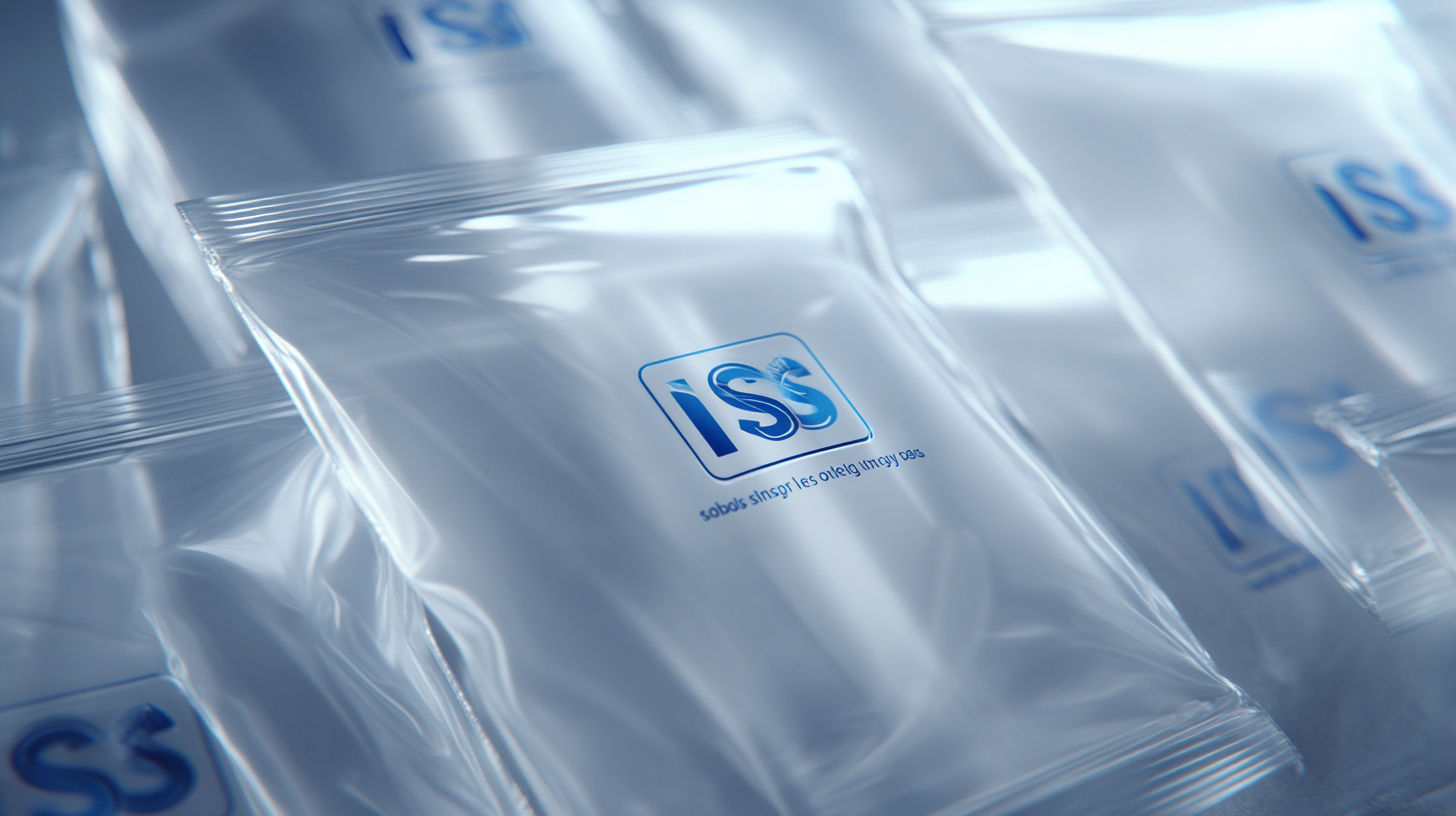- Phone:+86 15218629499
- Phone: +86 15766990063
- E-mail: Yzprinting01@163.com
In today's fast-paced commercial landscape, optimizing your supply chain is paramount for achieving operational efficiency and customer satisfaction. A recent report by Grand View Research indicates that the global flexible packaging market, which includes Pouch Plastic Bags, is projected to reach USD 475.57 billion by 2028, growing at a CAGR of 4.4%. This growth underscores the increasing reliance on innovative packaging solutions that not only preserve product integrity but also streamline logistical processes. Pouch Plastic Bags, known for their versatility and lightweight nature, provide significant cost savings in shipping and handling while also reducing material waste. As companies strive to enhance their supply chain efficiency, integrating high-quality Pouch Plastic Bags can serve as a crucial component in achieving sustainability goals, reducing supply chain complexities, and enhancing overall productivity.

When it comes to optimizing your supply chain, selecting the right packaging materials is crucial. Pouch plastic bags have gained immense popularity due to their versatility, durability, and cost-effectiveness. The choice of materials used in pouch manufacturing can significantly influence the efficiency of your supply chain. For instance, materials like polyethylene and polypropylene not only provide excellent moisture resistance but also ensure that products remain fresh during transport. By assessing the specific needs of your products, you can choose bags that enhance protection and reduce spoilage, ultimately leading to a smoother logistics process.
Additionally, it is essential to consider the compatibility of pouch plastic bags with your brand. Innovative materials such as biodegradable and recyclable options are becoming increasingly important as sustainability becomes a key focus for consumers. By opting for eco-friendly pouch materials, you can not only minimize your environmental footprint but also appeal to a growing segment of eco-conscious customers. This strategic decision can differentiate your brand in a competitive marketplace while ensuring compliance with regulatory standards, thereby streamlining your supply chain even further.
| Material Type | Common Uses | Advantages | Disadvantages | Sustainability Options |
|---|---|---|---|---|
| LDPE (Low-Density Polyethylene) | Food packaging, grocery bags | Flexible, resistant to moisture | Less durable than other plastics | Not biodegradable, but recyclable |
| PET (Polyethylene Terephthalate) | Beverage bottles, clear packaging | Strong, transparent, and lightweight | Can be less recyclable if contaminated | Recyclable and can be made from recycled materials |
| PP (Polypropylene) | Packaging, automotive parts | Stiff, chemical resistant | Partially opaque, can be brittle | Recyclable, made from post-consumer recycled content |
| Biodegradable Plastics | Compostable bags, packaging | Environmentally friendly options | Higher cost, may require specific conditions to decompose | Designed to break down more quickly in landfills or composting |
| PA (Polyamide) | Food bags, industrial packaging | High strength and flexibility | More expensive than other options | Some options are recyclable or made from recycled materials |
 Pouch plastic bags are proving to be a game changer in streamlining operations across various industries. With their ability to reduce material waste and enhance product protection, businesses can see significant improvements in efficiency. For instance, in the medical field, optimized kit bags must be robust and lightweight, ensuring that crews can transport essential supplies easily, even in challenging environments. This aligns with broader trends where companies prioritize ergonomics and functionality in their packaging solutions to enhance operational workflows.
Pouch plastic bags are proving to be a game changer in streamlining operations across various industries. With their ability to reduce material waste and enhance product protection, businesses can see significant improvements in efficiency. For instance, in the medical field, optimized kit bags must be robust and lightweight, ensuring that crews can transport essential supplies easily, even in challenging environments. This aligns with broader trends where companies prioritize ergonomics and functionality in their packaging solutions to enhance operational workflows.
Furthermore, the acquisition of RxMedic ARS by a leading solutions provider illustrates the push for enhanced efficiency in pharmacy operations, showcasing how innovations in bag design can support streamlined processing in various sectors. By adopting pouch plastic bags that are specifically designed to optimize storage and accessibility, companies can not only improve their supply chain but also gain a competitive edge. These advancements in packaging technology reflect a strategic approach to operational challenges, promoting both efficiency and cost reduction in today's fast-paced market.
In today’s supply chain landscape, sustainability is increasingly becoming a focal point, particularly in packaging materials. Pouch plastic bags, widely used for their versatility and space-saving attributes, are now being transformed to meet eco-friendly standards. According to a report by Smithers Pira, the global market for sustainable flexible packaging is projected to grow at a compound annual growth rate (CAGR) of 4.6% from 2020 to 2025, spotlighting the demand for eco-conscious alternatives to traditional plastics.
Companies are now opting for biodegradable and compostable pouch plastic bags, made from materials like PLA (polylactic acid) derived from renewable resources. The Biodegradable Products Institute (BPI) notes that products certified under their standards can decompose into natural elements within 90-180 days under the right conditions. This shift not only aligns businesses with consumer expectations for sustainability but also helps reduce landfill contributions, as traditional plastic can take hundreds of years to decompose. Additionally, adopting these eco-friendly pouch options can enhance brand reputation and customer loyalty, as a 2021 survey by Nielsen indicated that 81% of consumers prefer brands that are environmentally responsible. Adopting sustainable pouch plastic bags is not merely an option; it is rapidly becoming an essential strategy for businesses committed to a greener future.
In today's competitive market, businesses are continually seeking cost-effective solutions to optimize their supply chains. Pouch packaging, particularly plastic bags, presents an innovative approach that not only enhances product appeal but also helps to maximize savings. By utilizing lightweight and flexible pouch designs, companies can significantly reduce shipping costs due to lower material weight and more efficient storage capabilities. This dual benefit of cutting expenses while maintaining product integrity allows businesses to thrive in a budget-conscious environment.
Moreover, pouch plastic bags often require less packaging material than traditional containers, aligning perfectly with sustainability goals. This reduction in material usage not only lowers costs but also minimizes waste, contributing to a greener supply chain. Investing in high-quality pouch packaging can also improve product shelf life through enhanced barrier properties, ensuring that products remain fresh longer without additional preservatives. As businesses prioritize both cost-effectiveness and environmental responsibility, pouch plastic bags serve as a compelling solution that meets these critical needs.
In today’s retail landscape, the need for personalization extends beyond customer interactions to encompass the entire supply chain. Customizing pouch plastic bags is a strategic way to enhance your operational efficiency while meeting unique supply chain demands. By tailoring pouch designs, materials, and sizes, businesses can create solutions that not only protect products but also resonate with consumer preferences.

Tips for optimization include selecting biodegradable materials for eco-conscious branding, which can appeal to today’s environmentally-aware customers. Additionally, consider incorporating unique design elements, such as vibrant colors or specific logos, to differentiate your products on the shelf. This not only boosts brand recognition but also enhances the overall customer experience during unboxing.
Furthermore, utilizing data analytics can help you understand customer trends and preferences. This insight allows for the development of pouch bags that reflect current market needs, fostering a deeper connection with your audience. A thoughtful approach to customization in your supply chain can drive both efficiency and consumer loyalty.
